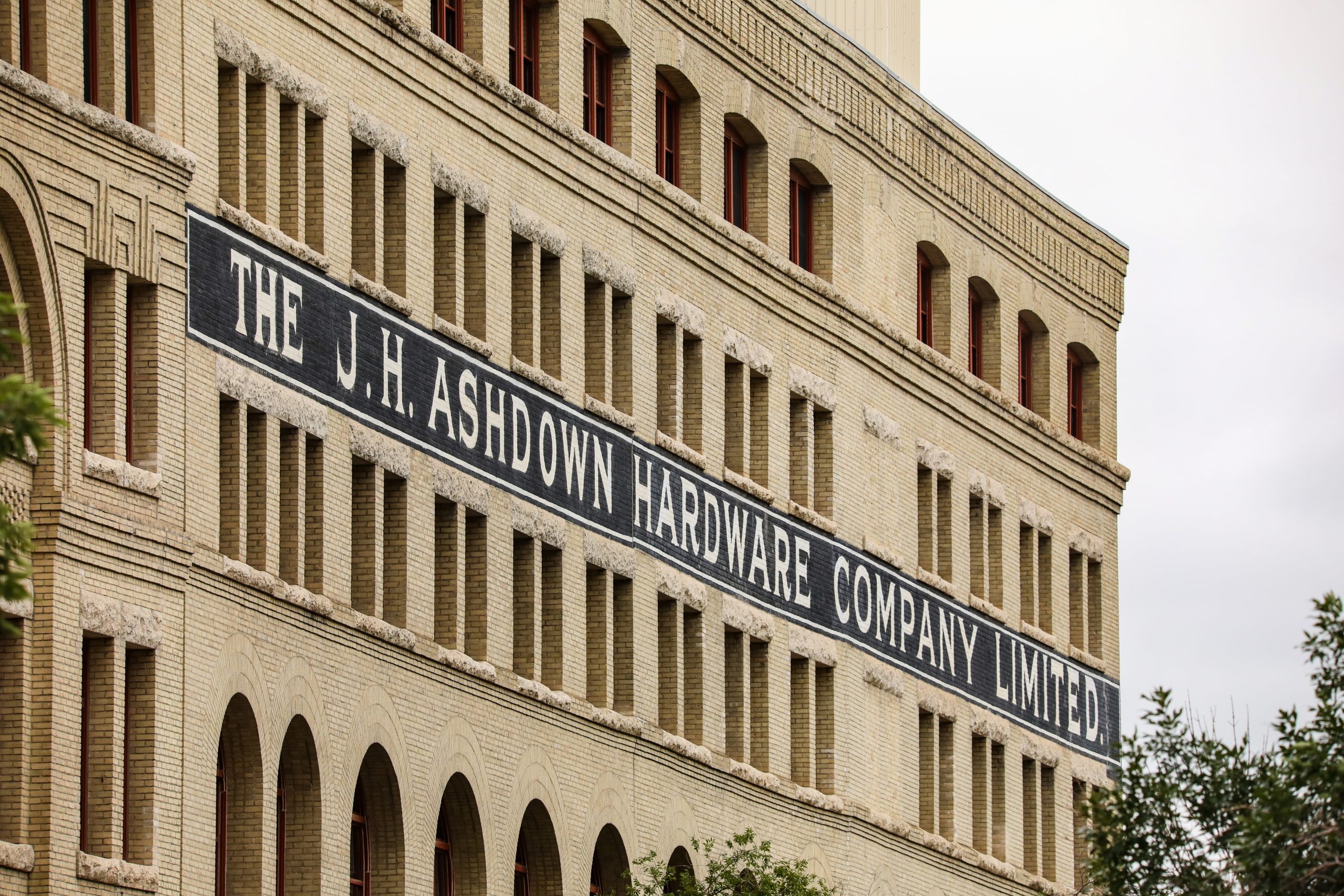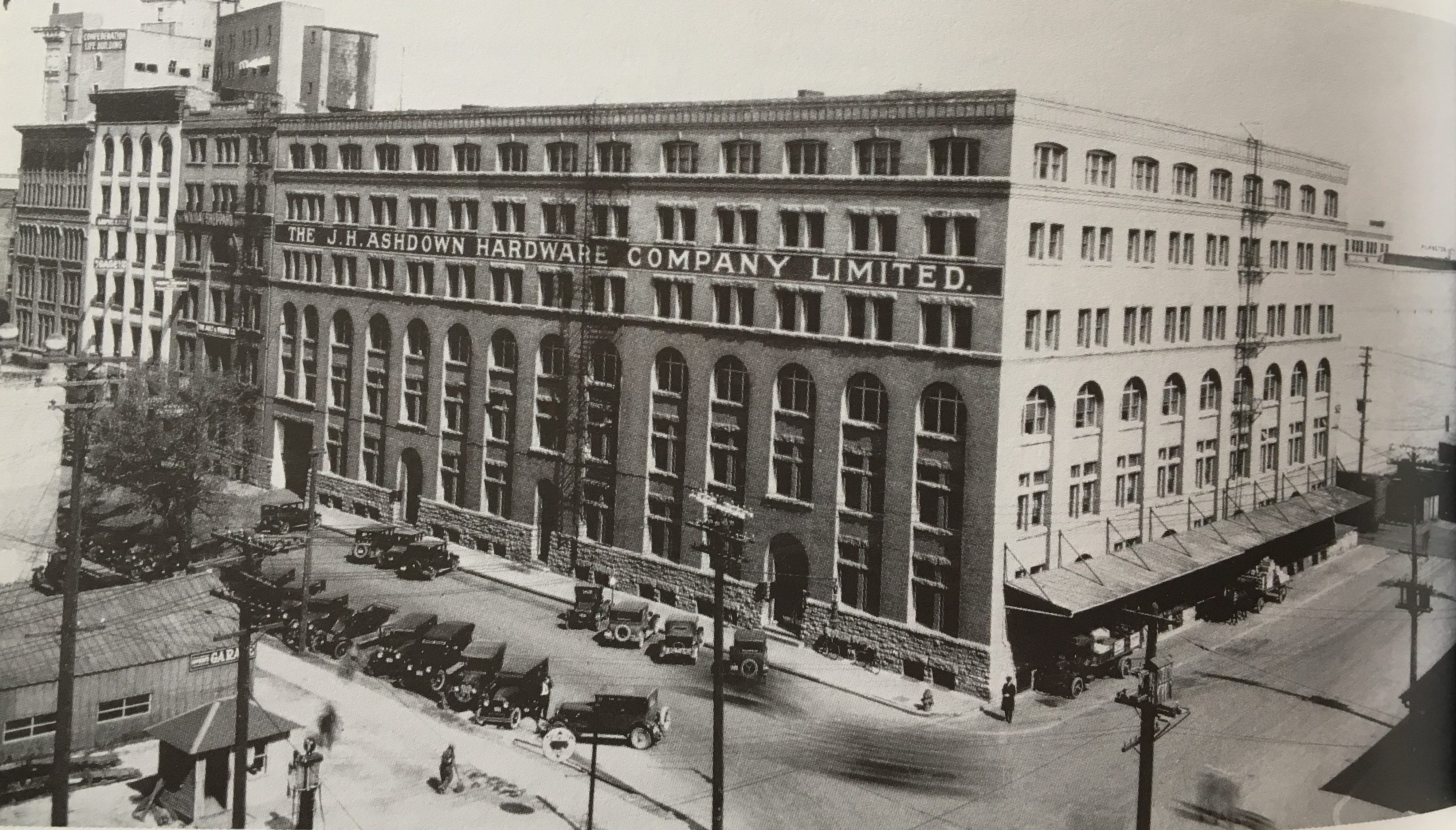Ashdown Warehouse (Ghost Sign)
| Address: | 167 Bannatyne Avenue |
|---|---|
| Current Use: | Residential |
| Original Use: | Warehouse |
| Constructed: | 1895 |
| Other Work: | 1899-1911 |
| Architects: |
|
More Information
With his business booming, J.H. Ashdown started construction on a large warehouse at 167 Bannatyne Avenue in 1894 that connected to the East Exchange spur line. Ashdown used to joke that he was the only company where the railway pulled up to his back door. Aside from the benefits of connecting his business to a national railway, the tracks allowed him to orchestrate one of Canada’s first publicity stunts. He gathered 40 rail cars with “Hardware from J.H. Ashdown” written on their slides and travelled town to town across western Canada to sell his wares.
The massive Ashdown Warehouse is one of the largest structures of this type in Winnipeg. Built in several stages, beginning with S. Frank Peter’s 1895 design for the original eastern section, and then added to over the years (1899 to 1911) with complementary sections designed by J.H.G. Russell. There were many additions as business boomed. The Ashdown Warehouse retains its visual connection to the former Ashdown Store, a block further west at Main and Bannatyne, which was the company’s important local retail outlet.
In 1988 the building was converted for residential use with Ashdown Warehouse being the first structure in the Exchange District to undergo a conversion to residential condominium units.It still boldly bears the Ashdown name in two-metre-high letters.
Spur Lines:
You can find dozens of fading numbers painted over loading dock signs on the Elgin Avenue and John Hirsch Place railway transfers. While walking through the Exchange District, try to see how many you can spot.
More information about 167 Bannatyne Avenue.
Design Characteristics
| Neighbourhood: | The Exchange District |
|---|
- Warehouse connected to the East Exchange spur line, allowing railway access directly to the building’s back door
Links & Related Places
- Ashdown Warehouse, 167 Bannatyne Avenue

